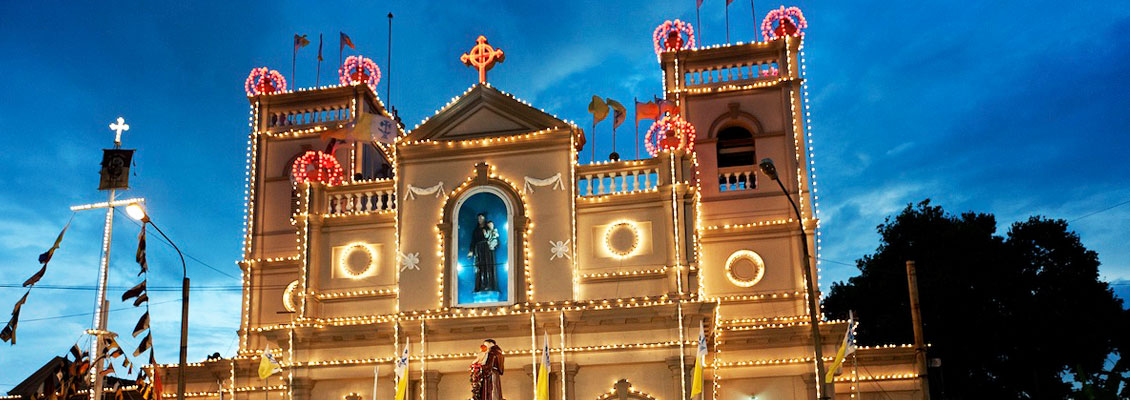ST. ANTHONY’S CHURCH – Kochchikade
St. Anthony’s Kochchikade is one of the best-known Churches in the Archdiocese of Colombi, both to Christians and non-Christians. Declared as a national shrine within the Archdiocese it is a Church that always has devotees seeking the assistance of the Saint. The site on which the Church was built brings into focus both the difficulty the people had to preserve their faith during the persecution by the Dutch East India Company which ruled the Maritime Provinces and the conviction of the people in their religion. The origin of the Church is accorded to Fr. Antonio. He was a companion to Joseph Vaz and had been assigned to minister to the religious needs of the Catholics in Colombo . He resided in a small house near Philip Neri’s Church in Pettah and whilst working as a labourer during the day, in the nights he held service for the faithful. One day on hearing that the Dutch soldiers aware of his residence were coming to arrest him, Fr. Antonio fled towards Kotahena. Some fishermen recognized him. The erosion of the sea, which prevented them from drying their nets, and promised him protection, if he could intercede from his God forth sea to recede, frustrated them. The priest surrounded by the fishermen and the soldiers who had by then arrived, prayed and the sea receded. The Dutch soldiers reported the incident to the Governor who gave the priest the land. He built on it a small hut and since the priest was from Cochin , the land was referred to as the place in which the Cohin had a shop hence the name Kochchikade. The present Church according to the Historical Sketch given by DJB Kuruppu was blessed on the 1st of June 1834 , ‘This Church is a material link with the past. The little mud hut put up by Fr. Antonio lasted till 1806, when it was enlarged. In 1822 the statue of St. Anthony was brought from Goa and placed in the altar of the small chapel. This is the statue that is venerated and though the altar on which it rests today is the side altar, it was the original altar of the old Church. It stands on the very spot sanctified by the miracle to which the origin of the statue is due.”
The deep affection people have for the Churc is such that when Governor Macallum wanted to acquire the land for the Port, the Colombo Port Improvement Commission recommended against it saying “The Church is held in peculiar veneration by the native Roman Catholic population, not only of the western littoral but of the whole Island . It is visited daily by numerous pilgrims-there is specially a large attendance on Tuesday.”
Above the Main Altar the statue of St. Anthony is surrounded by traditional motifs designed in brass and on either side are circular plaques representing the Sun and the Moon.

